Kirtle and Gown, c. 1570
Item a gown of russet worsted guarded with blak vellat with bent to the sleeves the bodies lined with brown linen styffened with buckram and fustian
Item a kirtle of bezoar culler satten the forebodis and forskyrtes of wrought silk with broade gards of cloth of gold laced with passamayne lace of silk and silver and gold chayne lace lyned with yellow linnen faced with brown taffata with sleeves of whit sarcenet and cloth of gold cut and tact in rising panes laced with chayne lace.
This gown represents what a well-to-do gentlewoman would have worn in London c. 1570. The outer gown is designed based upon portraits and pictures of women in the 1560s and 70s, particularly Lucas de Heere’s sketch of English Gentlewomen c. 1570. The kirtle is constructed and decorated very much like the loose kirtle in Arnold’s Patterns of fashion, the only change being the side and back seams were taken in to make it fit closely around the torso.
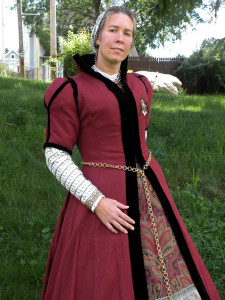
the gown has a side front seam which, now that I know better, I wouldn’t have used if I was making the gown now.The sleeves are boned with artificial whalebone.
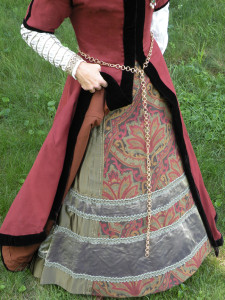
Showing the lining and kirtle beneath. The gown is faced as well as guarded with black velvet. I’m wearing a small farthingale beneath.
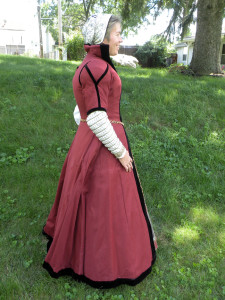
Side view of the gown. The sleeve base is a close-fitting sleeve of canvas, to which a network of poly-boning was sewn. This was covered with a layer of batting, and this covered with the outer fabric. I tried using shaped buckram, but found that it wouldn’t keep its shape when wet. Stuffing the sleeves created a lumpy shape that wasn’t smooth and clean.
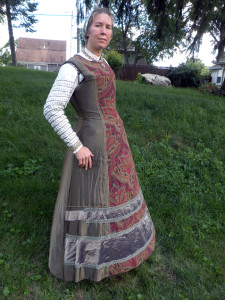
The Satin kirtle was made of charmeuse backed with canvas. If I was to do it again I’d go with true heavyweight silk satin; it prevents the wrinkles seen here at the side. The front section is brocade, and the guards are a layer of brown taffeta covered with a layer of metallic silk gold-and-purple gauze.
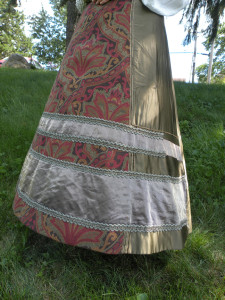
The placement and type of trim and guards was copied from that of the kirtle in Arnold’s Patterns of Fashion.
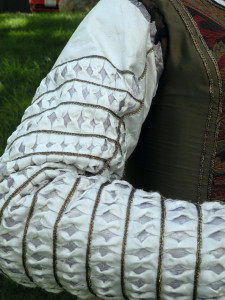
The sleeves of the kirtle were patterned after several pairs in Arnold’s Patterns of Fashion and her article on Pinking and Slashing.
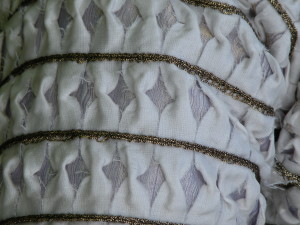
The sleeves were made of a layer of china silk over a layer of linen and metallic silk gauze. Early experiments showed that the china silk flattened easily and frayed a lot. I backed the silk with lightweight fusible interfacing to add body and reduce fraying. What you see here is 10 years of wear and fraying; it’s held up pretty well.
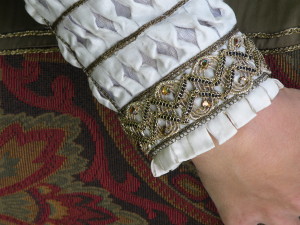
The puffs were mounted to the base layer and sewn down along the horizontal lines. Then the edges of each strip were caught back in the middle. Gold trim was sewn over the horizontal stitching lines, and small, looped pickadils of white silk sewn to the wrists of the sleeves. All sewing was done by hand with gold-colored silk thread.
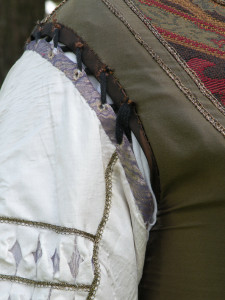
The sleeves were laced to the kirtle. I stopped the puffs at bicep level, and just above the elbow on the underside, to reduce bulk and wear and tear when it was worn with an overgown.
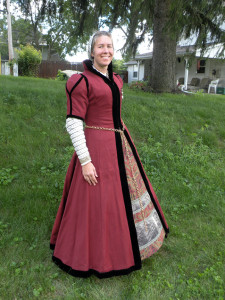
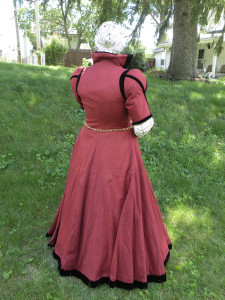
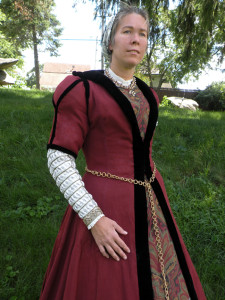
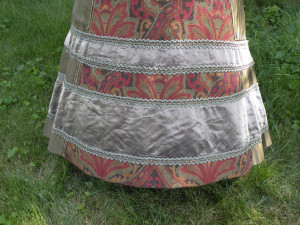
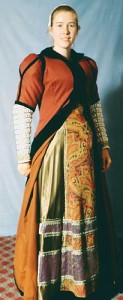
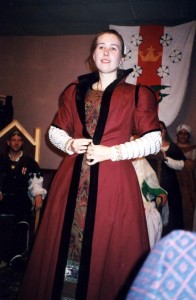
Leave a Reply